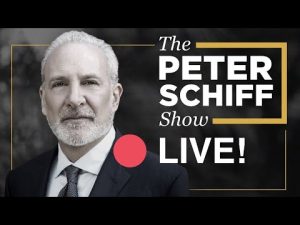The following video is brought to you courtesy of the Epic Economist YouTube Channel. Click the video below to watch it now.

Even the real estate giant itself recently warned about its growing financial difficulties. Evergrande alerted the global public that “unprecedented problems” are coming. The Chinese company is set to default on its debts totaling a staggering $300billion, which is likely to trigger a catastrophic financial chain reaction. Now, the latest analysis by experts this year has revealed worrying parallels with the events that led up to 1929 and today. According to Maury Klein’s 2001 book, “Rainbow’s End: The Crash of 1929”, several fundamentals of the previous crash can be applied today. In the book, he shows that one year before the crash “new listings on the New York Stock Exchange rose from 58 million shares in 1925 to 102 million in 1928.”
In 1929, the number of new listings hit record levels, as a speculative frenzy swept across Wall Street. According to Will Daniel, an investment reporter at Business Insider, the book exposes “startling similarities to today’s euphoric markets”. “While there are many differences between the era of the 1929 crash and the present day, the rise of new listings is a similarity that can’t be denied,” he wrote. On the other hand, there has also been a major increase in the number of inexperienced investors and speculators, the same thing happened leading up to 1929. Between 1928 and 1929, brokerage firms opened 599 new offices, and that has brought the total number of brokerage offices in New York to more than 1600 just before the infamous “Black Tuesday” — more than double the number of operating firms in 1925.
In 2021, a flood of new trading platforms emerged in app stores. Robinhood, E*trade, and Fidelity are just a few examples, and they have been booming like never before. The Charles Schwab Corporation alone added an unprecedented number of 3.2 million new brokerage accounts just in the first quarter, much more than in all of 2020. Even Big Short investor Michael Burry has made a comeback to his Twitter account last week to compare the current options-trading frenzy to the widespread speculation that sparked the Great Depression. Only this time, as Burry noted, the stakes are much higher.
A year and a half after the 2020 stock market crash, expectations for a much sharper correction have never been higher. Market insiders are expecting a huge pullback before the year’s end, and a number of indicators are signaling that another financial meltdown is looming on the horizon. Many major Wall Street players are now facing overwhelming uncertainty and they’ve started to get ready for the worst-case scenario. More than three-quarters of respondents to a CNBC Delivering Alpha investor survey say now is the time to be “very conservative” in the stock market and they highlighted the mounting risks of a crash. Respondents included at least 400 chief investment officers, equity strategists, portfolio managers, and contributors to the financial news outlet.
In a fresh analysis published earlier this week, financial analyst Charles Hugh Smith described how the Fed’s monetary policies have helped to create the biggest financial bubble in history, known as The Everything Bubble, which includes stocks, bonds, and housing. The expert says that now that liquidity has to stop propping up the markets, a massive bubble burst is just a matter of time.”The problem here is all speculative bubbles pop and so the central bank’s inflation of a speculative Everything Bubble has backed the entire economy into a corner from which there is no escape: either the bubble must keep inflating to ever dizzier heights of delusion and risk or the bubble pops and lays waste to all the phantom wealth,” Smith noted.
With all this in mind, are we really crazy enough to believe that this bubble will be supported by artificial money forever? Are we really crazy enough to believe that creating trillions of dollars out of thin air and then dumping all this money into assets that don’t increase in utility but only in “perceived” value is a sustainable and solid foundation for our economy? We all know better than that. A huge stock market crash is fast approaching and people need to run for the exits before an economic disaster is finally here.
https://www.epiceconomist.com”



